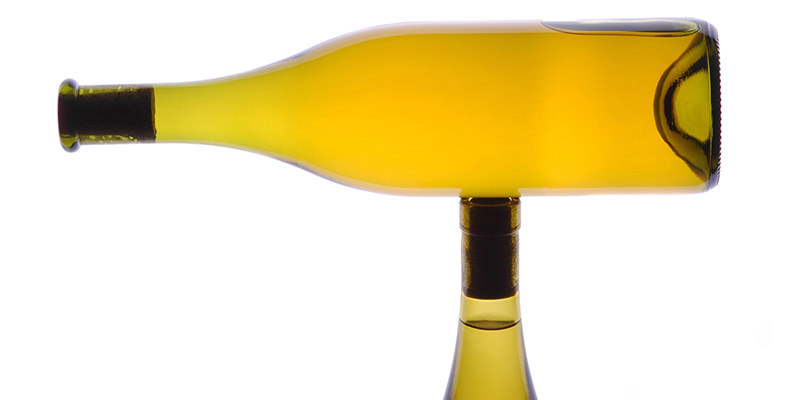Sugar is one of the fundamental components necessary to produce a successfully balanced wine and yet, at the same time, it can be one of the greatest manipulators of a wine’s final flavor.
On the fundamental side, sugar essentially creates wine. Yeast cells consume the natural sugars in grape juice and convert them into ethanol/alcohol during fermentation. This is when the magic starts, though not when it ends. Fermentation ends when the yeast cells present have consumed and converted all the sugar they can. Their role in the magic complete, the dead yeast cells rise to the top of the vat. Sugar’s role is just beginning.
When a new red wine is pressed off its skins or a new white wine is racked from the dead yeast cells, called lees, there are leftover sugar compounds. These compounds were either naturally non-fermentable or remain because the yeast cells could not convert them before they died. This leftover sugar is called residual sugar or RS.
Residual sugar is a fundamental component of a wine’s make up, along with acidity, tannin and alcohol. The interplay among these components defines a wine’s “balance.”
- Acidity cleans up the residual sugar, giving the wine depth. This leads you as a drinker to perceive the wine as clean.
- Tannin gives the wine grip, balancing the acidity and the residual sugar.
- Alcohol comes into play adding a slight sharpness to the wine, further cutting through the residual sugar.
When we say a wine is fruity, like a Pinot Noir and its bright cherry notes this is, in part, the result of the variety’s naturally high acidity balancing out the residual sugar. In a heavier wine, such as California Zinfandel — which has lower acidity than a Pinot Noir — we perceive more sweetness due to the residual sugar taking more of a center stage role. Although other softening factors like oak exposure and malolactic conversion come into play to aid in smoothing the wine out, the balancing act all starts with the residual sugar.
And how poetic does that sound, right? When a wine is well made and in complete harmony with all of the elements in the right proportion, it is absolutely delicious.
But just as sugar is a fundamental component of wine it can also serve as a manipulator and upset a wine’s natural balance. The intentional addition of certain sugars to a wine, like glucose and fructose is a common practice in winemaking. This is done, especially often with white varieties, to increase a wine’s commercial appeal. If a wine is very high in acidity and the winemaker believes a little more sweetness will add to the attractiveness of the wine, they may add sugars after the cessation of fermentation to tamp down the perception of acidity.
Why do this? Sometime during America’s evolution as a wine drinking culture, soft, smooth linear structure came to be synonymous with “good” wine. It’s as if the country was once given a fruit salad that was too acidic; from then on we’ve been served fruit salad coated with a layer of sugar. We are a nation of fructose. From candy bars to the McDonalds Dollar Menu there is sugar in everything. Major wine industry players know this and cater to this. And because the U.S. plays such an outsize role in the wine import game, many foreign wine brands also stick to this style to ensure their commercial success. Yet our taste preferences are changing.
That’s not to say there’s anything wrong with liking wines made in this style. Wine is a personal preference. I see it every evening at my restaurant In Vino while trying to find that right glass or bottle for my costumers. Whether the wine is manipulated with sugar or naturally balanced, as long as you enjoy what you’re drinking, it doesn’t matter.
But if you are a wine lover who is searching for balance and beginning to branch out from mass production bottles you’ll start to notice that said balance comes in different styles whether you are drinking red or white. Sweetness in a wine is enjoyable on many levels. If you can, try two bottles made from the same grape, but different regions, side by side.
A Sauvignon Blanc from California will have more residual sugar than that of a wine made from the same grape in Sancerre, France. Both are wonderful in their own right: the California wine achieves balance by its acidity cutting through the higher level of residual sugar. That higher residual sugar is due to the region’s warmer temperatures, which create riper fruit. The Sancerre achieves its balance in the opposite direction. The winemaker will try to keep the higher acidity at bay by allowing for some sweet fruit flavors to shine through.
The same can be seen in red varieties. Pinot Noir from Oregon is celebrated for its high acidity calming the residual sugar-driven fruit notes, resulting in high-toned elegance. That flavor profile is more in line with how we are evolving as consumers, whereas in the warmer Russian River Valley, the Pinot Noir will naturally produce more sugar. These wines are celebrated for their depth of flavor and are more in line with where we have come from as a wine drinking culture.

